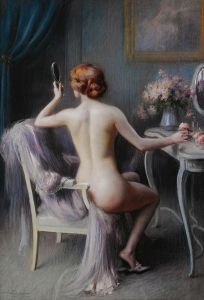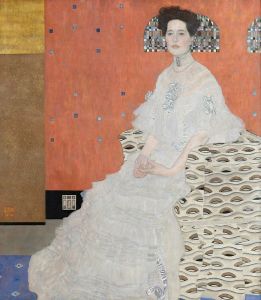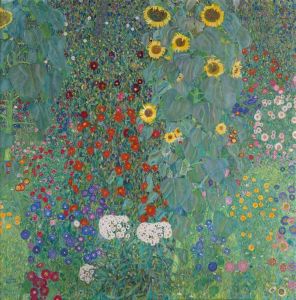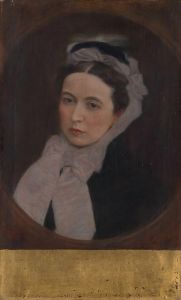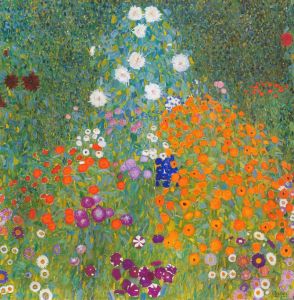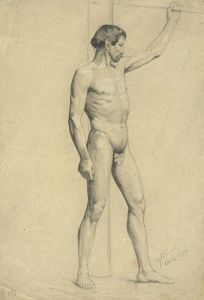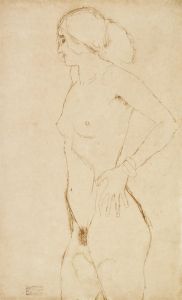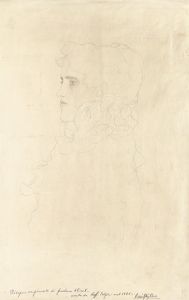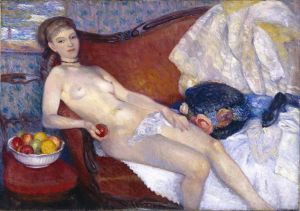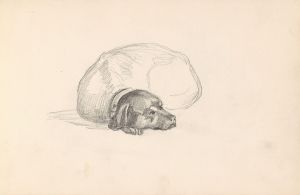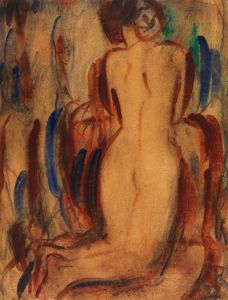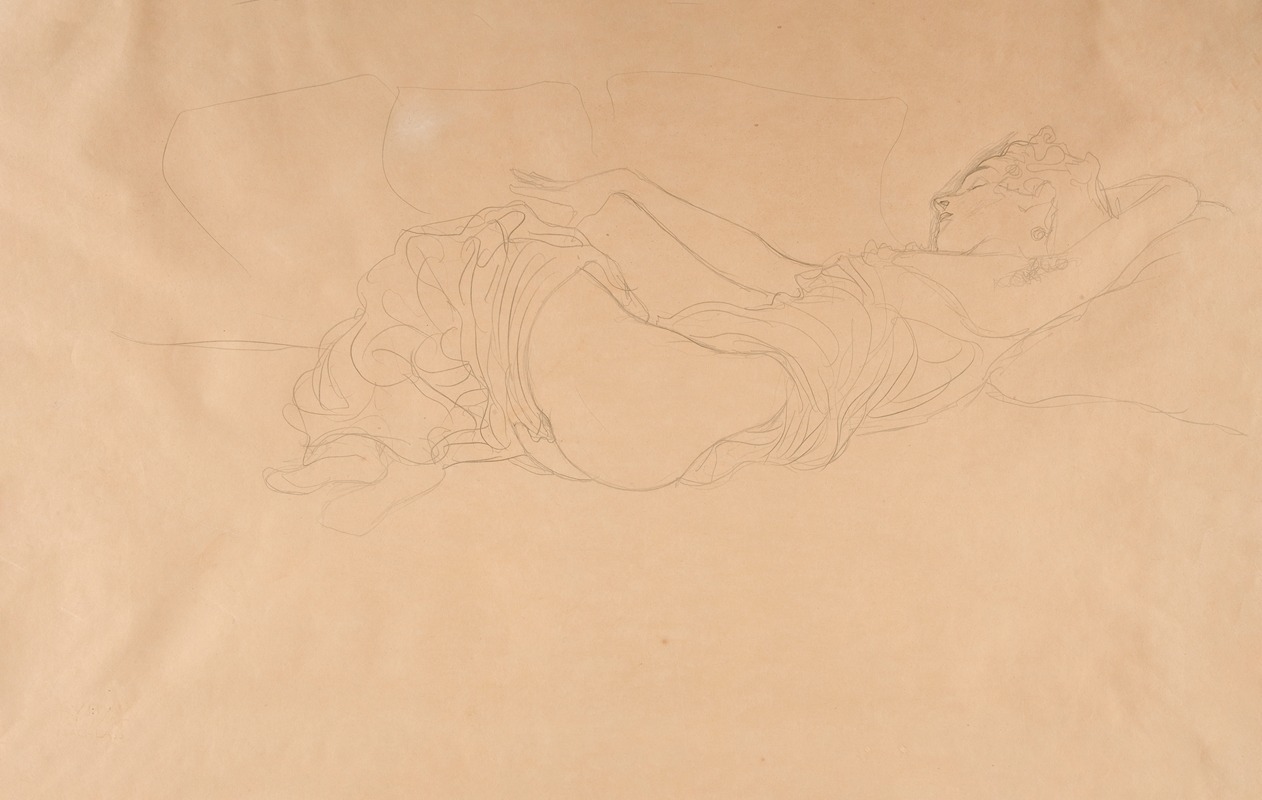
Woman Lying on her Back, Partly Dressed
A hand-painted replica of Gustav Klimt’s masterpiece Woman Lying on her Back, Partly Dressed, meticulously crafted by professional artists to capture the true essence of the original. Each piece is created with museum-quality canvas and rare mineral pigments, carefully painted by experienced artists with delicate brushstrokes and rich, layered colors to perfectly recreate the texture of the original artwork. Unlike machine-printed reproductions, this hand-painted version brings the painting to life, infused with the artist’s emotions and skill in every stroke. Whether for personal collection or home decoration, it instantly elevates the artistic atmosphere of any space.
"Woman Lying on her Back, Partly Dressed" is a drawing by the renowned Austrian symbolist painter Gustav Klimt. Klimt, born on July 14, 1862, in Baumgarten, near Vienna, is celebrated for his distinctive style that combines symbolism, eroticism, and a unique use of gold leaf. He was a prominent figure in the Vienna Secession movement, which sought to break away from traditional academic art and embrace more modern, innovative approaches.
The drawing "Woman Lying on her Back, Partly Dressed" is one of Klimt's many works that explore the female form with a sense of intimacy and sensuality. This piece, like many of Klimt's drawings, showcases his exceptional skill in capturing the human figure with delicate lines and a keen attention to detail. The subject of the drawing is a woman reclining on her back, partially clothed, which is indicative of Klimt's interest in the natural, unposed beauty of the human body.
Klimt's drawings often served as studies for his larger paintings, allowing him to experiment with composition, form, and the portrayal of his subjects. His works frequently feature women in various states of undress, reflecting his fascination with the female form and his desire to depict it in a way that was both realistic and idealized. The drawing "Woman Lying on her Back, Partly Dressed" is no exception, as it captures the softness and curves of the woman's body with a sense of grace and fluidity.
The medium of the drawing is typically pencil or chalk on paper, which Klimt used to create fine, precise lines that convey the texture and contours of the subject's skin and clothing. The simplicity of the medium allows the viewer to focus on the form and expression of the subject without the distraction of color or elaborate backgrounds.
Klimt's approach to drawing was influenced by his training at the Vienna School of Arts and Crafts, where he studied from 1876 to 1883. His early work was characterized by a more academic style, but he gradually developed a more personal and expressive approach that became his signature. This evolution is evident in his drawings, which often exhibit a sense of spontaneity and immediacy.
The intimate nature of "Woman Lying on her Back, Partly Dressed" reflects Klimt's broader artistic themes, which include the exploration of human sexuality, the beauty of the natural world, and the complex emotions associated with love and desire. His work often challenges conventional notions of modesty and propriety, inviting viewers to engage with the subject matter on a deeper, more personal level.
Gustav Klimt's legacy as an artist is marked by his ability to blend traditional techniques with innovative ideas, creating works that continue to captivate audiences around the world. "Woman Lying on her Back, Partly Dressed" is a testament to his skill as a draftsman and his enduring fascination with the human form.





